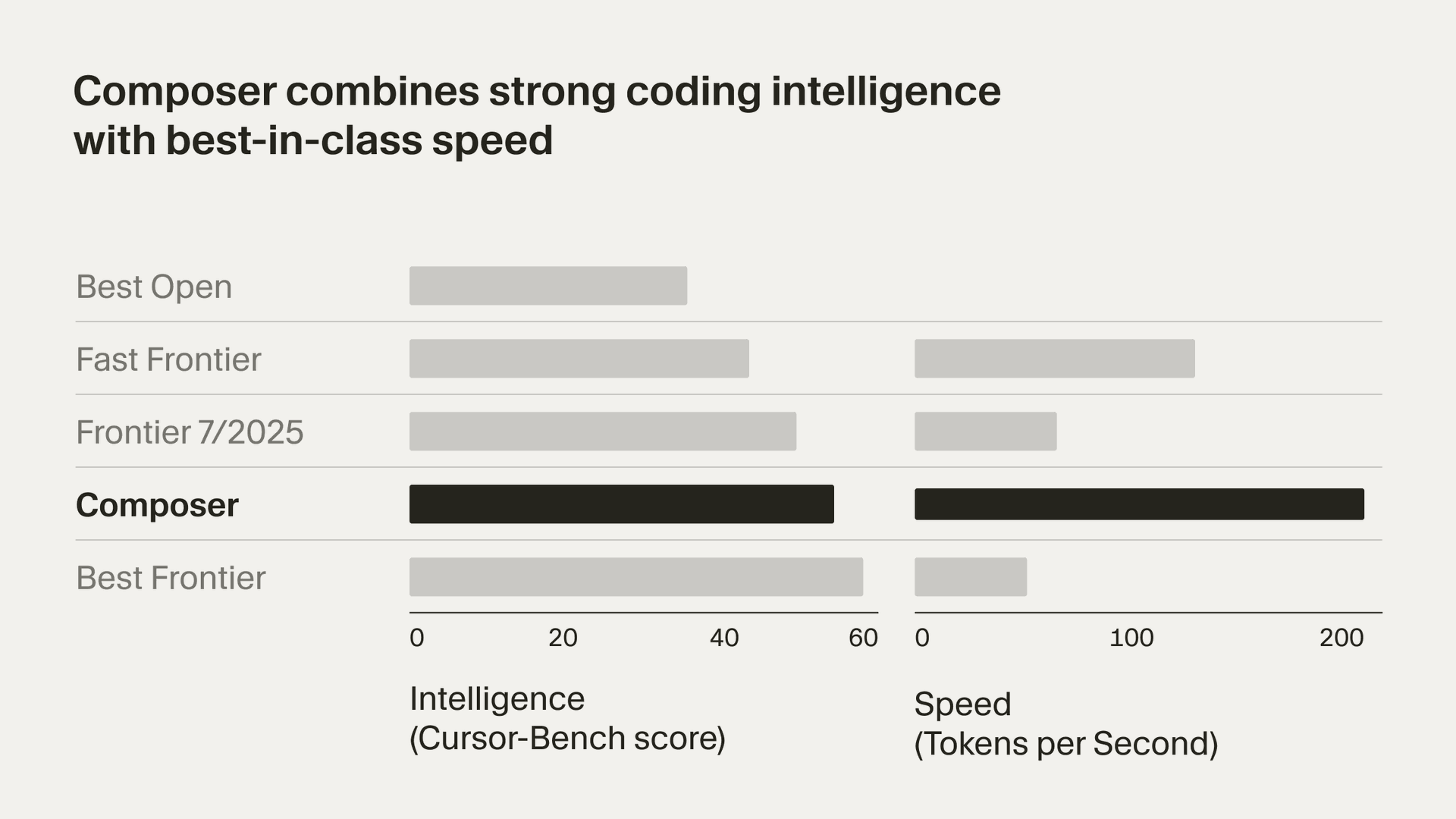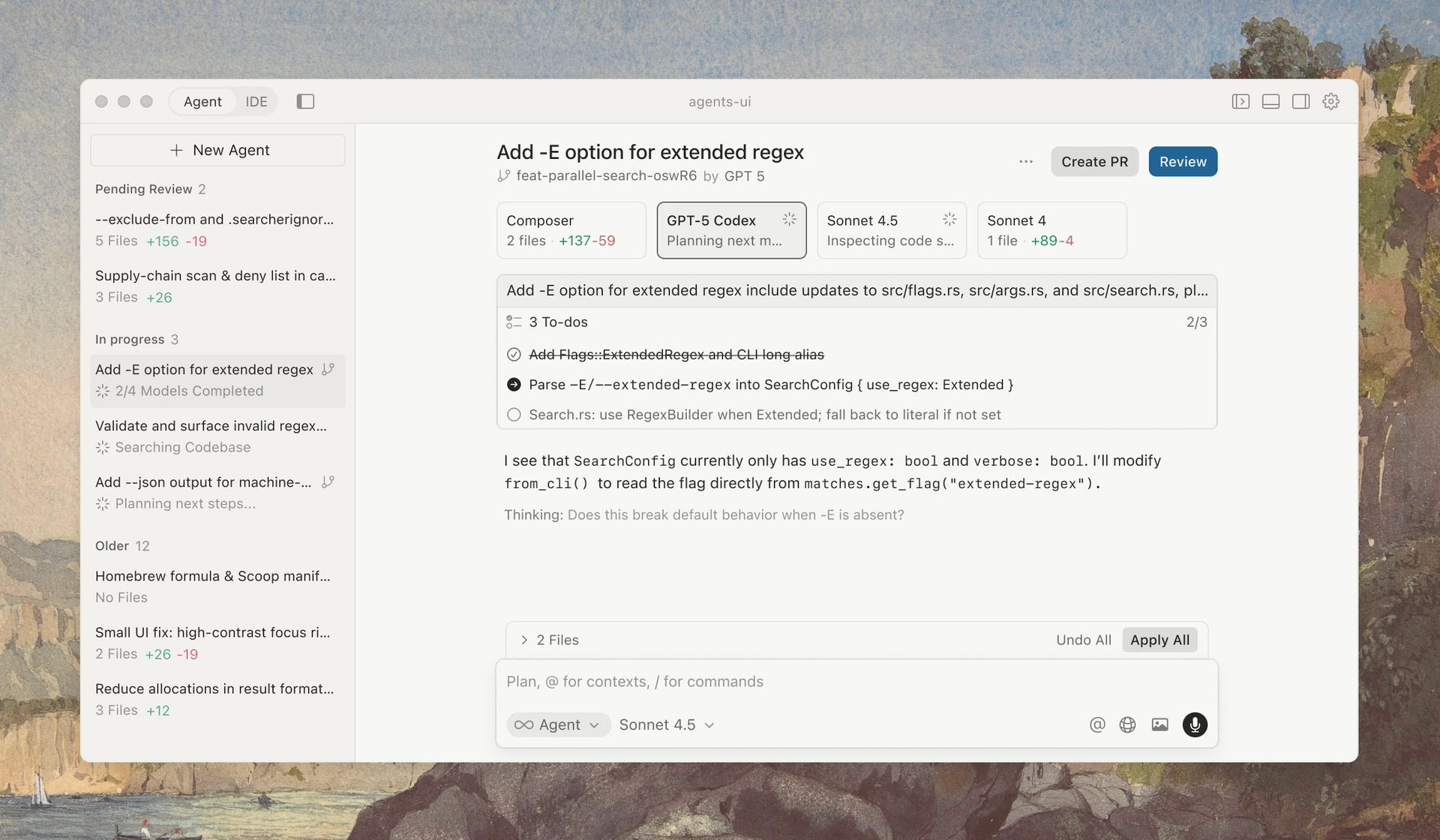The world of AI-assisted coding just took an interesting leap forward. Cursor, the AI-first code editor, has officially rolled out Cursor 2.0. This isn't just a minor patch; it's a fundamental rethinking of the developer experience, moving from simple code completion to a truly "agentic" workflow powered by a brand-new, in-house model.
Key Takeaways:
- Meet Composer: Cursor's new in-house model is built for speed, delivering frontier-level results 4x faster than comparable models.
- Trained with RL: Instead of just text, Composer was trained with Reinforcement Learning (RL), teaching it to use tools, run tests, and solve problems like an agent.
- Agent-First Workflow: The new UI is built around "agents, not files," allowing you to run multiple agents in parallel to achieve a specific outcome.
- Editor Upgrades: The 2.0 release also includes an embedded browser, unified code review, and native voice mode.
Meet Composer: The Need for Speed
The star of the show is Composer, Cursor's first "agentic coding model." In the race for AI supremacy, the team didn't just aim for "smartest", they aimed for "fastest in its class." The result is a model that delivers frontier-level coding results but at a speed 4x faster than similarly intelligent models. Most interactions reportedly complete in under 30 seconds, a critical threshold for keeping a developer "in the flow."

Image Credit: Cursor
The 'How': Reinforcement Learning and Expert Models
So, how did they achieve this blend of speed and intelligence? Composer is a Mixture-of-Experts (MoE) model, a design where different parts of the model (the "experts") specialize in different tasks, which is often more efficient than one giant, monolithic model. More importantly, it was trained using Reinforcement Learning (RL).
Instead of just learning from static text, Composer was trained in a simulated environment, given real-world coding problems and a full suite of tools (like semantic search and terminal access). The model was then "rewarded" for finding the most efficient and correct solution. This process taught it to independently perform complex searches, fix linter errors, and even write and execute unit tests.

Image Credit: Cursor
A New 'Multi-Agent' Interface
Cursor 2.0 leverages this new speed with an entirely new interface built around agents, not files. The goal is to let developers focus on the desired "outcome" while agents handle the complex details. You can now run multiple agents in parallel, powered by Git worktrees, without them tripping over each other.
Interestingly, the team found that assigning the same hard problem to multiple models and picking the best result "significantly improves the final output." It's like having a team of specialized junior devs you can spin up instantly to tackle a problem.
More Than Just a Model
The 2.0 update is packed with other practical upgrades. There's a new embedded browser directly in the editor, complete with dev tools. Code review is also improved, letting you see all of an agent's changes across the entire codebase in a single, unified view, rather than hunting through different files. Add in a new native voice mode and performance boosts, and it's a very comprehensive release.
The Takeaway
Cursor 2.0 is a clear bet that the future of-coding is about agentic-driven outcomes. By building their own fast model (Composer) optimized for this exact workflow, Cursor is carving out a unique and powerful niche. This move challenges the idea of a one-model-fits-all approach and pushes the whole industry toward a faster, more integrated, multi-agent future.

Introducing Cursor 2.0: Coding with a Co-Pilot Gets a Major Upgrade